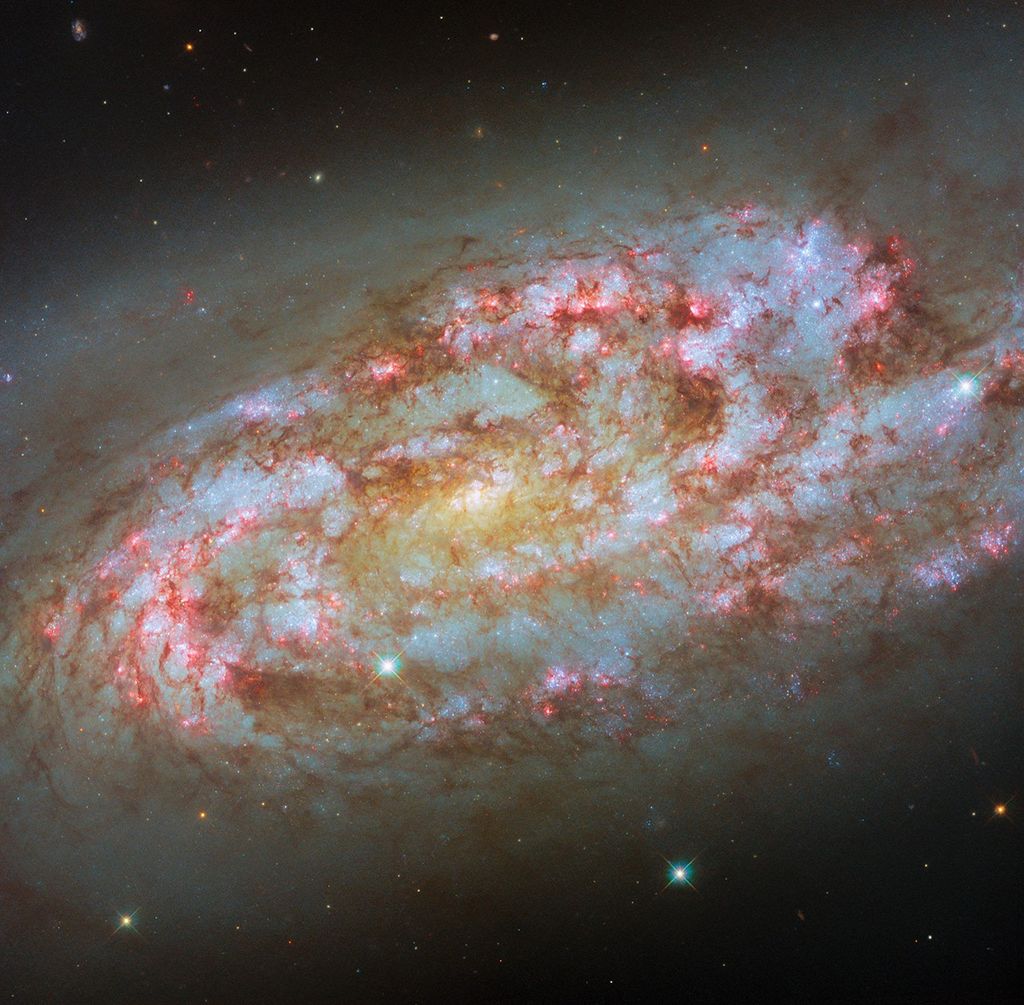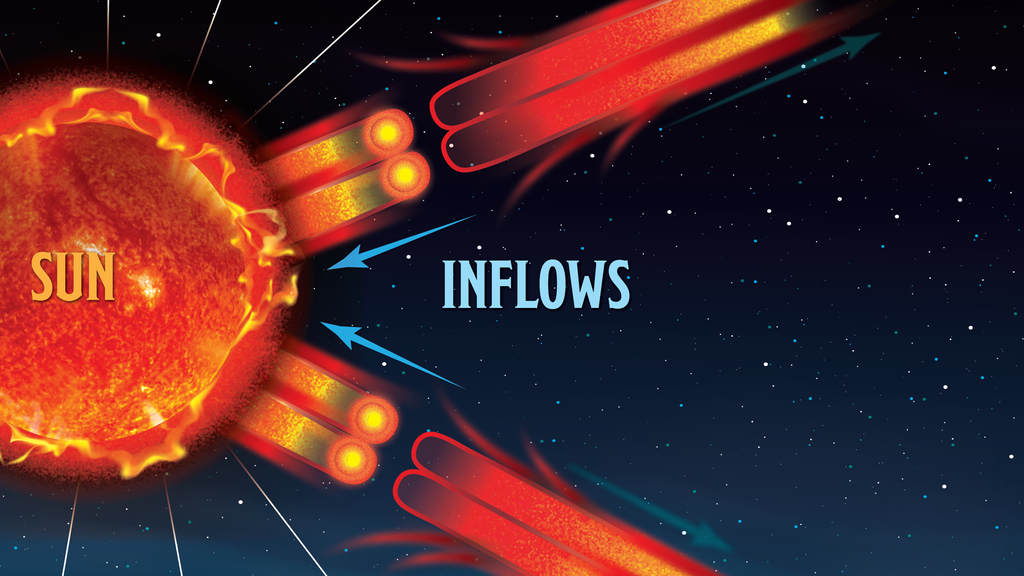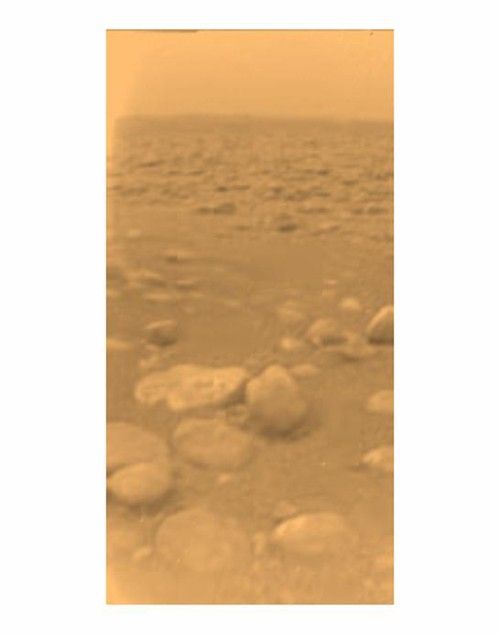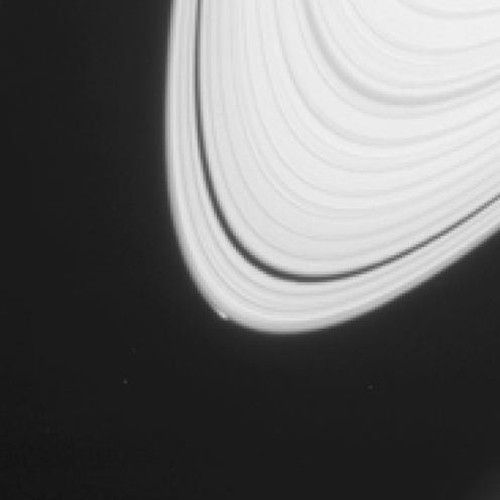- The Huygens probe makes first landing on a moon in the outer solar system (Titan)
- Discovery of active, icy plumes on the Saturnian moon Enceladus
- Saturn’s rings revealed as active and dynamic -- a laboratory for how planets form
- Titan revealed as Earth-like world with rain, rivers, lakes and seas
- Studies of the great northern storm of 2010-2011
- Radio-wave patterns shown not to be tied to Saturn’s interior rotation as previously thought
- Vertical structures in the rings imaged for the first time
- Study of prebiotic chemistry on Titan
- Mystery of the dual bright-dark surface of Iapetus solved
- First complete view of the north polar hexagon and discovery of giant hurricanes at both of Saturn’s poles
1. The Huygens probe makes first landing on a moon in the outer solar system (Titan)
Huygens's historic 2005 landing on Titan was the most distant in our solar system to date. The probe’s 2-hour and 27-minute descent revealed Titan to be remarkably like Earth before life evolved, with methane rain, erosion and drainage channels and dry lake beds. A soup of complex hydrocarbons, including benzene, was found in Titan's atmosphere. Huygens also provided the first on-site measurements of the atmospheric temperature.
Also see:
- Huygens Landed with a Splat - Jan. 18, 2005
- Preview of Jan. 21, 2005 press conference - Jan. 18, 2005
- When Huygens Met Titan
2. Discovery of active, icy plumes on the Saturnian moon Enceladus
The discovery of Enceladus's massive plume was such a surprise that mission designers completely reshaped the mission to get a better look. The discovery became even more important when Cassini found evidence of water-based ice in the plume. Life as we know it relies on water, so the search for life suddenly extended to this small, bright moon. The recent discovery of signs of an subsurface ocean makes Enceladus one of the most exciting science destinations in our solar system.
Also see:
- Evidence of an underground water ocean - April 3, 2004
- More on Enceladus
3. Saturn’s rings revealed as active and dynamic -- a laboratory for how planets form
Cassini’s decade-long mission made it possible to watch changes in Saturn’s dynamic ring system. The spacecraft discovered propeller-like formations, witnessed the possible birth of a new moon and observed what may be one of the most active, chaotic rings in our solar system (Saturn’s F ring).
Also see:
- NASA Cassini Images May Reveal Birth of a Saturn Moon - April 14, 2014
- Forensic Sleuthing Ties Ring Ripples to Impacts - March 31, 2011
- Cassini Sees Moon Building Giant Snowballs in Saturn Ring - July 20, 2010
- Saturn Propellers Reflect Solar System Origin - July 8, 2010
4. Titan revealed as Earth-like world with rain, rivers, lakes and seas
Imaging with radar, and both visible and infrared wavelengths shows that Titan has many geologic processes similar to that of the Earth. These processes generate methane rains, which build river channels and form lakes and seas containing liquid methane and ethane that don’t immediately evaporate.
Also see:
- Cassini Gets New Views of Titan's Land of Lakes - Oct. 23, 2013
- Titan Has Liquid Lakes, Scientists Report in Nature - Jan 3, 2007
- First Full Mosaics of Titan's Surface - May 13, 2005
5. Studies of the great northern storm of 2010-2011
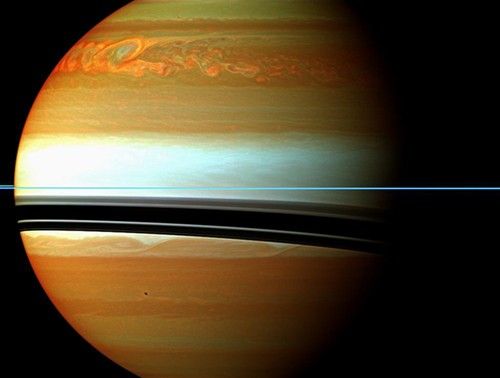
Late in 2010, Saturn’s relatively tranquil atmosphere erupted with a storm of gigantic proportions. Typically a 30-year storm, this one arrived 10 years early, giving Cassini a front-row seat. Within months, this storm grew to encircle the planet with a swirling band. The largest temperature increases ever recorded for any planet were measured. Molecules never before seen in Saturn’s upper atmosphere were detected. The storm diminished shortly after its head collided with its tail, a little less than a year after it began.
Also see:
- NASA's Cassini Watches Storm Choke on Its Own Tail - Jan 31, 2013
- NASA's Cassini Sees Burp at Saturn After Large Storm - Oct 25, 2012
- Cassini Chronicles that Life and Times of Saturn's Giant Storm - Nov. 17, 2011
- Cassini and Telescope See Violent Saturn Storm - May 19, 2011
6. Radio-wave patterns shown not to be tied to Saturn’s interior rotation as previously thought

Saturn emits radio waves known as Saturn Kilometric Radiation. A similar radio wave pattern was measured at Jupiter to deduce the length of that planet's day, but Saturn's daily rotation rate turned out to be much more complicated. Recent data from the radio and plasma wave instrument show that the variation in radio waves controlled by the planet's rotation is different in the northern and southern hemispheres. The northern and southern rotational variations also appear to change with the Saturnian seasons and the hemispheres have actually swapped rates. Saturn’s length of day is still not known.
Also see:
- Saturn's Radio Period Crossover - March 23, 2011
- Cassini Finds Saturn Sends Mixed Signals - March 22, 2011
7. Vertical structures in the rings imaged for the first time
Once about every 15 years, the Sun shines on the edge of the ring plane and northern and southern sides of the rings receive little sunlight. Cassini measured the thick, long shadows from this rare event to determine the heights of structures within the rings.
Also see:
- Cassini Reveals New Ring Quirks, Shadows During Saturn Equinox - Sept. 21, 2009
- Revelations in Saturn's rings continue as Equinox approaches - Aug. 7, 2009
8. Study of prebiotic chemistry on Titan
Titan’s atmosphere is a zoo teaming with a variety of molecules -- the most chemically complex in the solar system. Beginning with sunlight and methane, ever more complex molecules form until they become large enough to form the smog that covers the giant moon. Nearer the surface, methane, ethane, and other organics condense and fall to the surface where likely other prebiotic chemistry can take place.
Also see:
- Cassini Sees Precursors to Aerosol Haze on Titan - June 5, 2013
- Titan's Methane World - Not Built to Last? - April 15, 2013
- Titan's Surface Organics Surpass Oil Reserves on Earth - Feb 13, 2008
9. Mystery of the dual bright-dark surface of the moon Iapetus solved
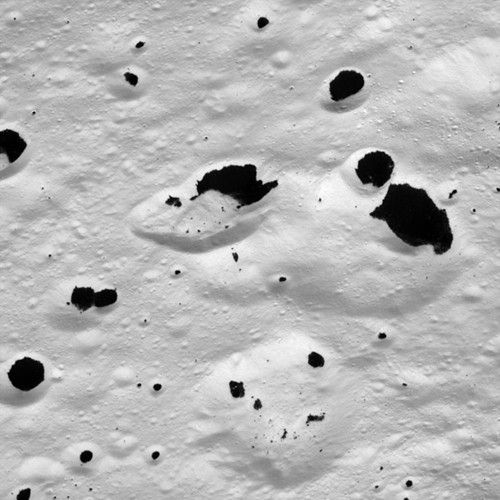
The origin of Iapetus's two-faced surface has been a mystery for more than 300 years. The Cassini spacecraft solved the puzzle. Dark, reddish dust in Iapetus's orbital path is swept up and lands on the leading face of the moon. The dark areas absorb energy and become warmer, while uncontaminated areas remain cooler. The moon’s long rotation period contributes to the yin-yang effect.
Also see:
- Reddish Dust and Ice Migration Darken Saturn's Mon Iapetus - Dec 10, 2009
- Global View of Iapetus's Dichotomy - Dec. 10, 2009
- Saturn's Moon Iapetus is the Yin-and-Yang of the Solar System - Sept 12, 2007
10. First complete view of the north polar hexagon and discovery of giant hurricanes at both of Saturn’s poles
Saturn’s polar regions have surprised scientists with a the presence of a long-lived hexagonal-shaped jet stream in the north and two hurricane-like storms at both poles. The driving forces of each remain a mystery. In the remaining three years of Cassini’s mission, scientists hope to learn more of their properties and conditions surrounding their existence.
Also see:
- Cassini Gets Close-up Views of Large Hurricane on Saturn - April, 29, 2013
- Swirling Storms on Saturn - Nov. 28, 2012




